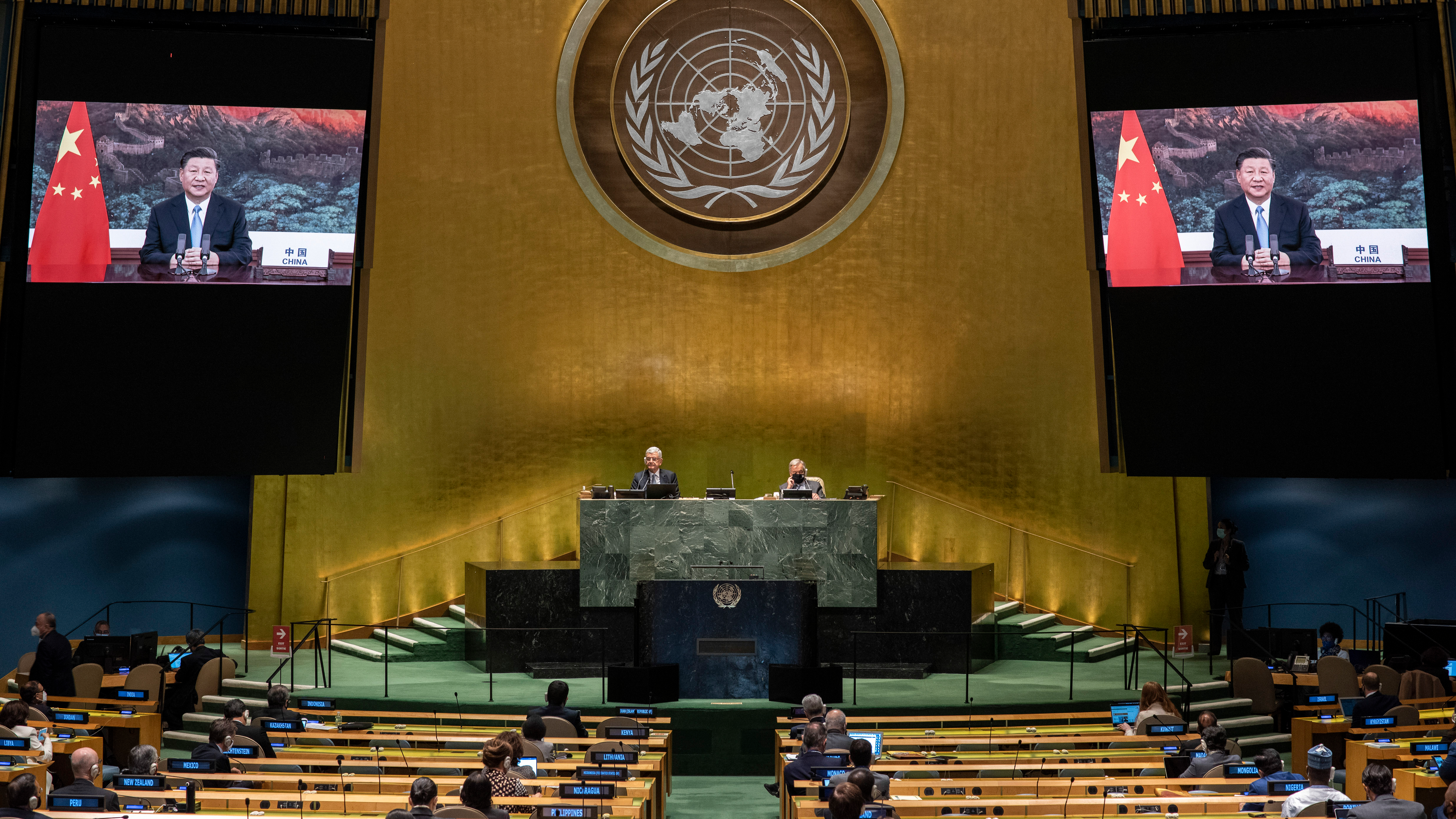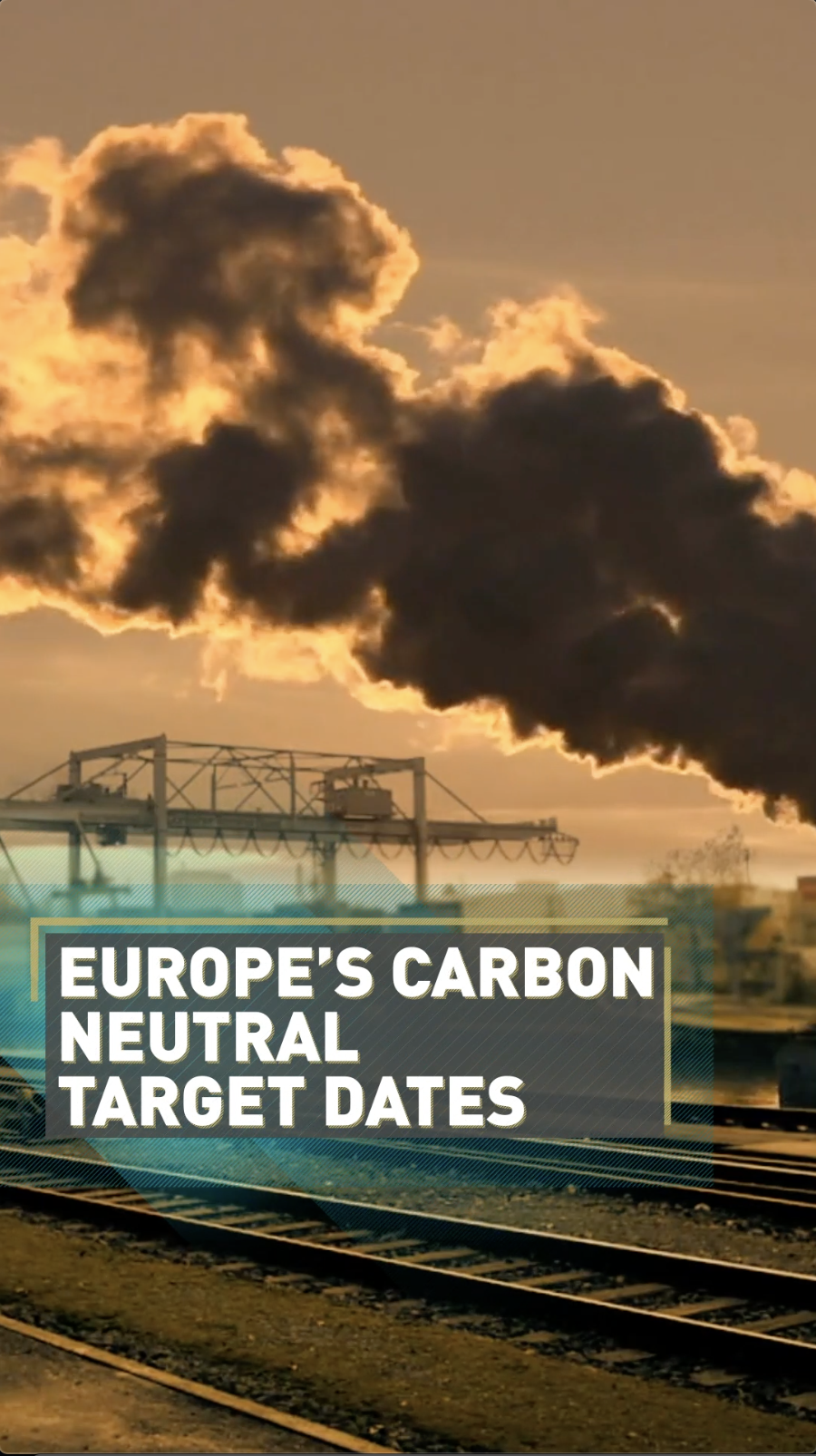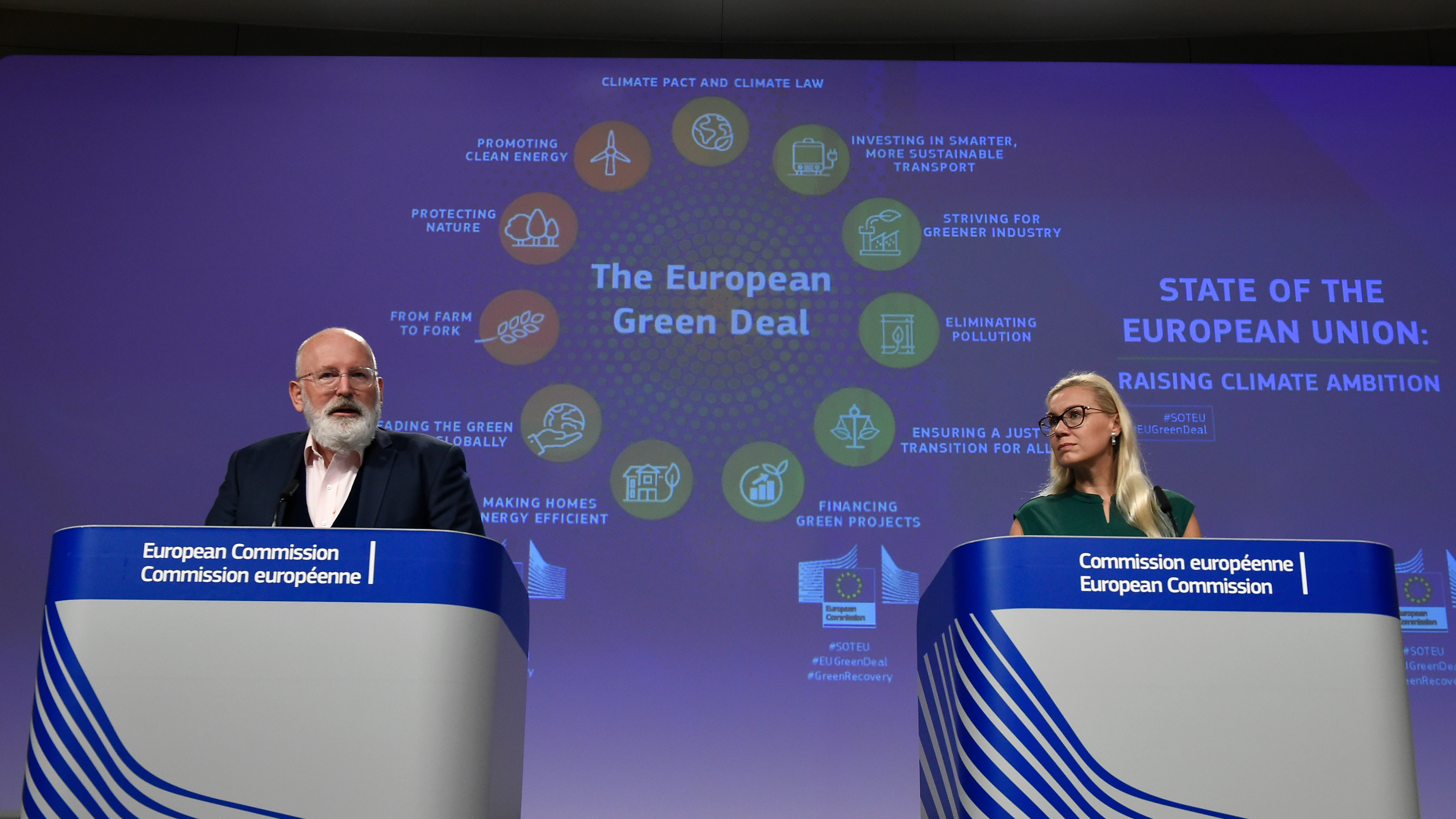
China's President Xi Jinping put forward a concrete target for the country's role in fighting climate change at the UN general assembly. /Eskinder Debebe/United Nations/AFP
China's President Xi Jinping put forward a concrete target for the country's role in fighting climate change at the UN general assembly. /Eskinder Debebe/United Nations/AFP
Chinese President Xi Jinping announced his country would achieve a peak in carbon dioxide emissions before 2030 and carbon neutrality before 2060, in a speech to the UN general assembly.
The commitment came as an important step to bring global action on climate change back to the forefront of the world's priorities, after being overshadowed by the COVID-19 pandemic this year.
Xi pledged China would end its net contribution to climate change and scale up its Paris climate accord target by adopting more vigorous policies and measures, while urging all countries to pursue a "green recovery of the world economy in the post-COVID era."
Although many analysts have predicted that China was already on track to achieve peak emissions by 2030, the formal announcement was welcomed by the European Union, which has been negotiating with China to set a target for carbon neutrality and to announce a peak date.

Global commitments
Last week, the European Commission presented its 2030 Climate Target Plan strengthening its commitments under the Paris Agreement. It pledged an "EU-wide net greenhouse gas emissions reduction target of at least 55 percent by 2030, compared with 1990 levels," which it added "puts the EU on a balanced pathway to reaching climate neutrality by 2050."
Under the 2015 Paris Agreement, drawn up at the United Nations Climate Change Conference, or COP21, (and so far ratified by 189 out of 197 parties), the parties to the convention committed to limit the increase in global average temperature to 2 degrees Celsius above pre-industrial levels and to continue efforts to limit the temperature increase to 1.5 degrees Celsius.
But in order to achieve this objective, according to scientific estimates, global emissions must start to decline drastically this decade and the world must achieve carbon neutrality – when no more carbon is emitted than can be removed from the atmosphere – by the start point of the second half of this century.
So while an increasing number of governments are translating the goals of the Paris Agreement into national strategies, setting out plans for a vision of a carbon-free future, many are refusing to do so, or are remaining silent.
In fact, only eight members of the G20 have set out goals or made pledges for when they will achieve carbon neutrality. These are Canada, China, France, Germany, Japan, South Africa, the UK and the EU.
But how does Europe fare?
00:30

Europe's pledges
2035
Last year, Finland's new five-party coalition government pledged to make the country carbon neutral by 2035, one of the fastest targets set globally. Industrial logging and the use of peat as an energy source are major challenges for the country to meet the target, but Prime Minister Antti Rinne said it was time to "invest in the future."
2040
In January this year, Austria's first Conservative-Green coalition government promised to pursue climate neutrality by 2040 and 100 percent clean electricity by 2030, underpinned by binding carbon targets.
Iceland announced its Climate Strategy in 2018 with measures to help the country meet its Paris Agreement targets for 2030 and reach the government's ambitious aim to make Iceland carbon neutral before 2040.
2045
Sweden enshrined its carbon neutral targets in law in 2017 when it committed to becoming a net-zero carbon emitter by 2045, bringing forward its original timeline for carbon neutrality by five years.
Last year, Scotland's devolved government also enshrined in law its commitment to becoming a net-zero society by 2045 – five years before the rest of the UK. It also set an ambitious target to reduce emissions by 75 percent by 2030.
2050
The European Union is working towards a bloc-wide 2050 net-zero emissions target, under a "Green Deal" published in December 2019. As part of this, in March last year, the Commission proposed a legally binding target, meaning EU Institutions and member states are collectively bound to take the necessary measures at EU and national level to meet the target.
Several member states including Denmark, France, Germany, Hungary and the UK have already enshrined in law their country's pledge to reach carbon neutrality by 2050. Spain's government is in the process of doing so and presented its draft climate framework bill to parliament in May 2020.
Other countries across Europe, including Belgium, Ireland, Norway, Portugal, Slovakia and Switzerland have also taken policy positions to reach this goal of carbon neutrality in the same year.

The European Commission introduced new plans to step up the EU's climate ambition for 2030. John Thys/Pool/AFP
The European Commission introduced new plans to step up the EU's climate ambition for 2030. John Thys/Pool/AFP
COP 26
The next UN climate summit, COP26, delayed by a year to November 2021 and to be hosted by the UK, is considered vital in ensuring countries increase their efforts to meet the goals of the Paris Agreement, as current commitments under the accord would lead to a disastrous 3 degree Celsius rise.
Nations are expected to come to COP26 with strong national commitments to make it a success. China and the EU's recent public commitments to bringing forward new plans means two of the three biggest emitters in the world are now pledging action. Noticeably missing is the world's second biggest emitter, the U.S.
Speaking just before China's President Xi Jinping, U.S. President Donald Trump used his UN general assembly speech to criticize the Paris accord, calling it a one-sided deal and attacking China for being the world's largest source of carbon emissions.
Trump has referred to climate change as a "hoax," and in 2017 pulled the U.S. out of the Paris accords, laying out an international approach to the problem. He also rolled back or pared down hundreds of environmental regulations during his time in office, but has said the U.S. has reduced its carbon emissions by more than any country in the agreement.